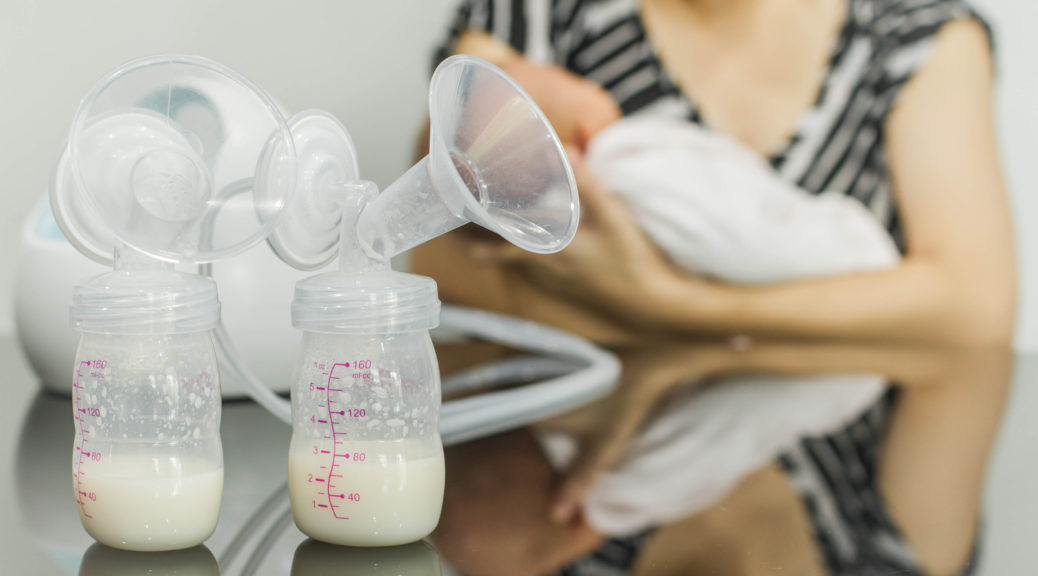
Breast pump and mastitis, is there a relationship?
Are breast pumps related to mastitis? There is no doubt that breast pumps are a very useful tool for nursing mothers and their use is very popular, especially for preparing milk banks for breastfeeding.
Studies suggest that breast pumps may cause mastitis because they can cause damage to the breast parenchyma and the nipple-areola complex if a correctly sized funnel is not used, if the suction is too high or if the mother uses the pump for an excessive amount of time (1). In addition, according to a recent study, pumping does not allow bacterial exchange between the baby’s mouth and the mother’s breast and this may predispose to breast dysbiosis (2).
However, there are authors who defend that the use of the breast pump is not related to the development of mastitis and even postulate that it could be an ally to prevent or treat mastitis since it allows the breast to be emptied. In this regard, a literature review was published in June which analyzed whether the use of breast pumps is related to the development of mastitis (3). The most important conclusions reached by the authors of this review are:
- The authors argue that milk stasis produces an inflammatory response in the breast and, therefore, keeping the breast empty is favorable for preventing mastitis. Consequently, the use of the breast pump when the breast is very full could be beneficial.
- There are studies that associate breast pump use with the occurrence of mastitis, but the authors suggest that this may be a consequence rather than a cause, as many studies are retrospective and women may be using the pump to decrease mastitis symptoms.
- They mention that a study of 1844 participants suggested that mothers could reduce the risk of problems and injuries by choosing better quality pumps and learning to pump with a person rather than following written or video instructions (4).
- Another causal factor described in the pathophysiology of mastitis is under vacuum, in particular with regard to the possible malfunctioning of the vacuum of a poorly used or defective breast pump and the consequent poor milk expression. However, the authors argue that a reduction of the pump vacuum does not result in complete failure of the pump to express milk and that even with a suboptimal vacuum, some milk extraction is achieved.
The association of the use of breast pumps with the appearance of mastitis is very controversial, an example of this is that the latest protocol of the Academy of Breastfeeding Medicine on mastitis (1) recommends avoiding the use of breast pumps when there are obstructions or milk stasis and recommends simply continuing breastfeeding on demand so as not to increase the stimulation of milk production that could increase this breast engorgement. In this protocol they mention that excessive milk expression can worsen mastitis (1).
Finally, it should be noted that this article is a literature review; therefore, the search for scientific articles on the subject does not follow a rigorous methodology, as is the case with systematic reviews, and it is the authors who choose the articles to write the state of the art on a particular topic. Therefore, they are reviews that may be biased by the author’s opinion or experience.
We also believe it is important to mention that one of the authors of the article is an employee of the company Medela, although the authors state that the work was carried out in the absence of any commercial or financial relationship that could be interpreted as a possible conflict of interest.
References:
1. Mitchell KB, Johnson HM, Rodríguez JM, Eglash A, Scherzinger C, Zakarija-grkovic I, et al. Academy of Breastfeeding Medicine Clinical Protocol #36: The Mastitis Spectrum, Revised 2022. Breastfeed Med. 2022;17(5):360–76.
2. Moossavi S, Sepehri S, Robertson B, Bode L, Goruk S, Field CJ, et al. Composition and Variation of the Human Milk Microbiota Are Influenced by Maternal and Early-Life Factors. Cell Host Microbe. 2019;25(2):324-335.e4.
3. Mitoulas LR, Davanzo R. Breast Pumps and Mastitis in Breastfeeding Women : Clarifying the Relationship. Front Pediatr [Internet]. 2022;10:1–6.
4. Qi Y, Zhang Y, Fein S, Wang C, Loyo-Berríos N. Maternal and breast pump factors associated with breast pump problems and injuries. J Hum Lact [Internet]. 2014;30(1):62–72.